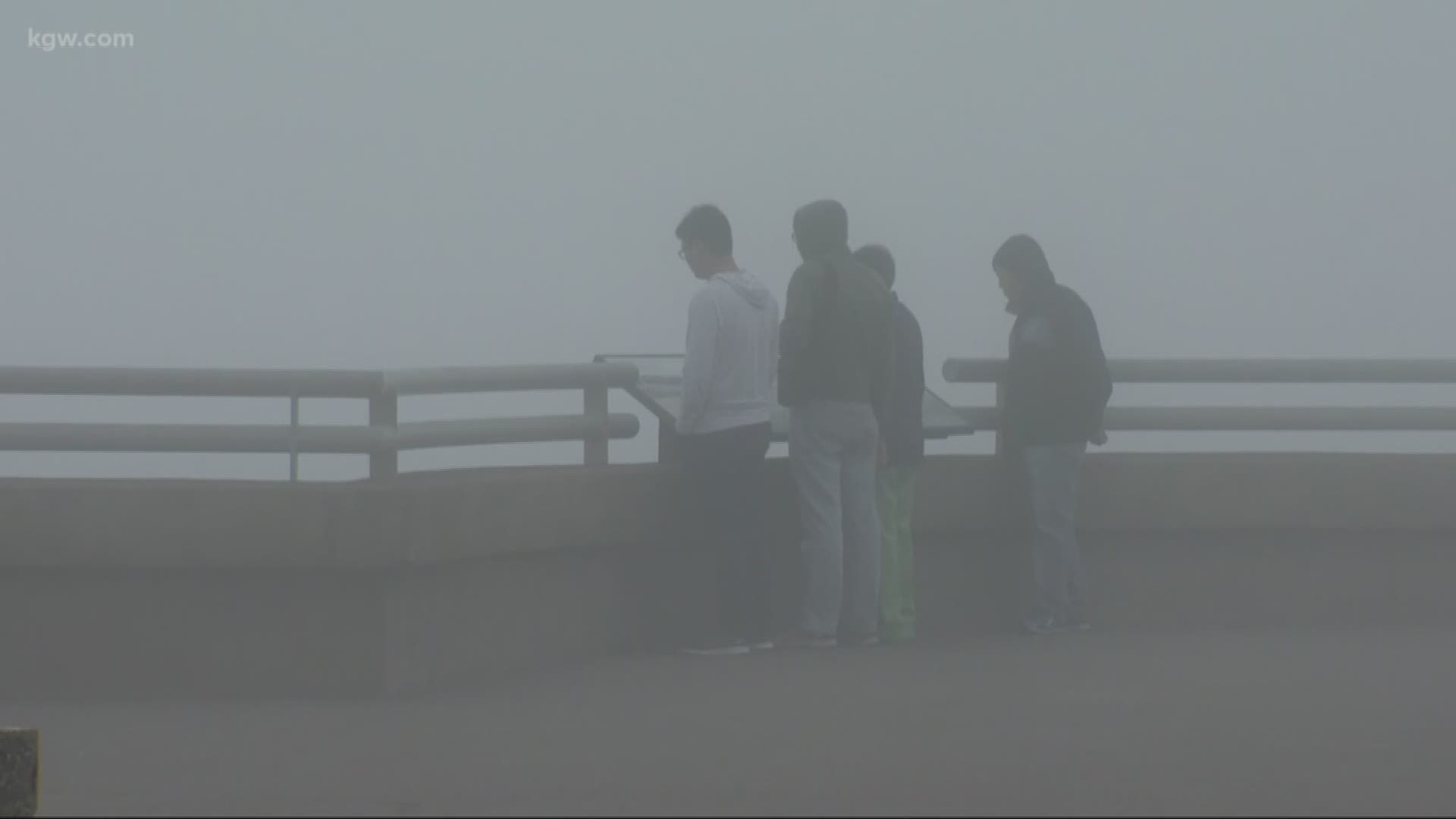SKAMANIA COUNTY, Wash. -- The Johnston Ridge Observatory opened Wednesday, May 16, kicking off the unofficial viewing season at Mount St. Helens.
Unfortunately, the first day left much to be desired for those who tried to peek through the fog that surrounded the mountain.
Trisha Bonapace, from Longview, drove to the observatory so a relative could possibly get a view.
“We came up to bring my husband’s sister here, to see the mountain,” she said.
“What do you think?” I asked.
“It’s beautiful! But its going to clear,” she insisted. Actually, it did not this day.
Willam Kopaciewicz is a recent geology graduate from the East Coast. He too hoped for a better view.
“Yeah…I’m visiting my sister here in Seattle and we came to see Mount Helens and you can’t see more than 20 feet so…” he said, trailing off as he looked into the fog.
The eruption of the volcano in Hawaii has renewed interest in all things volcanic. And Mount St. Helens is a relatively active volcano.
“Mount St. Helens, in the recent geologic record, has been the most active volcano in the Cascades by far,” said Seth Moran. He’s the Scientist in Charge at the Cascades Volcano Observatory in Vancouver. The group studies and monitors Northwest volcanoes, especially Mount St. Helens, because they believe it will erupt again.
“On average one or two eruptions per century, going back 4,000 years. So, from that perspective its likely it will erupt again, conceivably in our lifetimes or in another generation or so’s lifetime,” said Moran.
Friday marks the 38th year since the massive eruption of Mt. St. Helens. Scientists say its always doing something, like moving magma that creates small earthquakes almost daily.
“These are just the subtle warning signs that are giving us a long lead time and that St. Helens is saying I’m not done and you gotta pay attention to me,” said Moran.

